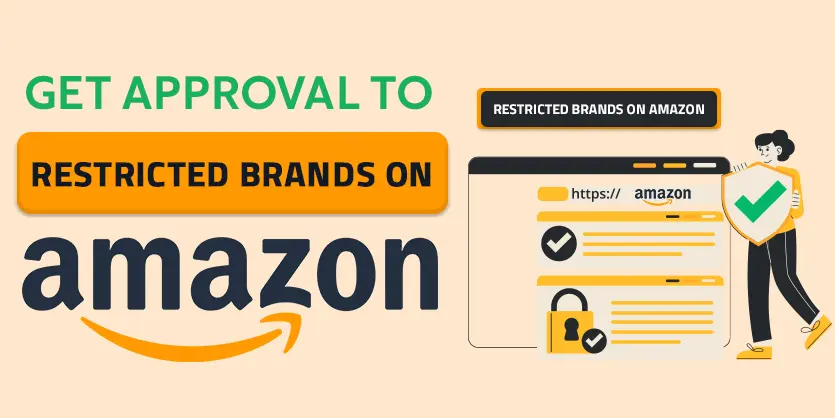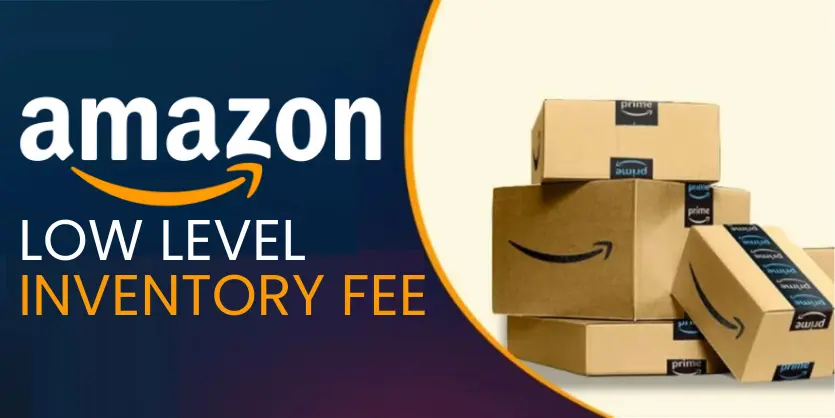In 2024, Amazon has unveiled revisions to its fee structure with the intention of striking a balance between the requirements of sellers utilizing its fulfillment service FBA and the operational costs associated with sustaining a dynamic and efficient marketplace.
Some fees are being increased while others are being decreased. These adjustments are aimed at providing enhanced value and operational efficiency.
However, The good thing is that – they will not apply OVERNIGHT! You will get plenty of time to prepare yourself for this. Also, there is a lot of negative feedback spreading about those fee changes, so who knows these could be changed before they actually go into effect which is currently scheduled.
In this article, we will discuss in detail of these fee changes that will applied in 2024. Actually, there are 10 to 11 news about fee changes that will apply from 2024. We will go through all of them and try to break them down as much as possible.
Before diving deep into the details, let’s check the recent email of Amazon about the fee changes –
Amazon stated that – “will focus on how we partner together to inbound and place inventory across our network. Placing inventory close to customers improves the speed of those orders, driving more sales at lower transportation costs. To enable more efficient use of our network, we will begin charging separately for inbound and outbound activities. As a result, we will lower our outbound fees while creating new inbound fees that you can reduce or avoid entirely based on how you inbound products.”
Amazon FBA Sellers May Need to Pay an Extra $0.15 per Unit Sold
But these fees are significantly less than the increases announced by other logistics providers.
Actually, Amazon is a kind of logistics partner. So they are kind of competing with other logistics support like UPS, FedEx, etc. If you are delivering items with other logistics, you know well that most of the logistics support is taking more than Amazon.
Honestly speaking, Amazon’s shipping cost is approximately 70% lower than the two-day shipping methods offered by other major third-party logistics providers.
However, you need to pay $0.15 per unit sold, though it sounds low, but if you sell 1000 units, it would be $150.
Inbound Placement Fees will Increase
These fees will be effective starting March 1, 2024, and fees will be charged 45 days after the products are received.
According to Amazon, For standard and large Bulky-sized products inbound placement service cost will reflect distributing inventory to fulfillment centers close to customers. These fees will average $0.27 per unit for standard-sized products and $1.58 per unit for Large Bulky-sized products.
Check out the following table for the fees you’ll pay for each item you send to Amazon:
Amazon FBA Inbound Placement Service Fee Chart
When you create your shipping plans, you’ll see a cost estimate for each available inbound placement option. The fee will vary based on the following factors:
- Item size: Whether the item is small standard, large standard, or large bulky
- Weight: Unit weight for small standard. The greater dimensional weight or unit weight for large standard and large bulky.
- Inbound placement service: Premium or Discounted.
- Inbound location: The fee range will vary by inbound location (i.e., location of receive center or fulfillment center), with higher fees for shipments sent to inbound locations in the West versus other parts of the country.
When deciding between Premium and Discounted service options, factors like product types, quantities in your shipping plan, existing inventory levels across Amazon’s network, and customer demand location come into play. During the creation of a shipping plan, cost estimates for each inbound placement option will be provided.
Note: The FBA inbound placement service fee does not apply to extra-large-sized products.
Introducing a Low-Inventory Level Fee
The low inventory level fee will be applicable for standard-sized products only from April 1, 2024.
The fee applies if you carry consistently low inventory levels relative to unit sales
For example, each month, you are getting orders of 1000 units. Currently, You have 1500 items in stock in Amazon warehouse. After 1 month, your inventory will be 500 which is comparatively low according to your monthly sales.
In this case, you need to give the low-inventory level fees.
But, you can avoid this fee by maintaining more than 4 weeks of inventory relative to sales. This means that continuously, you should have 1000 items in stock in the Amazon warehouse.
The question is – why Amazon will increase the low-level inventory fees?
Actually, Maintaining sufficient inventory levels enables Amazon to place inventory close to customers across our network, reducing costs to fulfill orders. With the low-level inventory, they need to distribute products across all networks, degrading delivery speeds and increasing shipping costs.
Here is the following low-inventory-level fee rate card:
Amazon Return Processing Fee will Increase
According to the news – Amazon’s return processing fee will apply to high return-rate products in all categories, except apparel and shoes. And this return processing fee will start from June 1, 2024
However, The returns processing fee will only apply to products that have the highest return rates relative to other products in their category. This might impact sellers. So, sellers may need to be more careful about the products.
The return rate of your product is calculated as the percentage of shipped units in a particular month that customers return during that month and the following two calendar months.
For instance, for units dispatched in June 2024, the return rate is determined by the percentage of those units returned over June, July, and August 2024.
For each returned unit exceeding the return rate threshold for the respective product category, a returns processing fee will be applied to the shipped units of a given month.
Return fees will be debited from your account between the 7th and 15th day of the third subsequent month.
Here is the following 2024 Returns Processing Fee rate card:
2024 Returns Processing Fee Changes Rate Card
Decrease FBA Fulfillment Fee Rates
Amazon is set to reduce the FBA fulfillment fees for standard-sized products by $0.20 per unit and for Large Bulky-sized products by $0.61 per unit. The big news this year is the more detailed approach to FBA Size Tiers, which benefits sellers on the lower end of a tier.
These changes will happen in two phases: February 5th, 2024, and April 15th, 2024.
These changes will happen in two phases: February 5th, 2024, and April 15th, 2024. First, they’ll add new granular tiers, and then there’ll be an across-the-board fee reduction averaging 4% across size tiers. The biggest reduction (5%) goes to the Large Standard tier for 4 oz or less, and the smallest reduction (3%) is for the Large Standard tier for 2.75+ to 3lb.
Products priced below $10 will maintain an additional discount of $0.77 on per-unit fees.
For more details please visit this link –
Fulfillment Fee Discount
Amazon will offer a fulfillment fee discount ranging from $0.04 to $1.32, depending on item size and weight, for eligible products in the Ships in Product Packaging (SIPP) program.
These discounts will apply starting February 5, 2024.
The Ships in Product Packaging (SIPP) program, seen as a rebranding of Amazon’s Ships in Own Container (SIOC) initiative, offers cost savings for enrolled SKUs.
Not only reduces costs but ensures minimal materials with sufficient strength to prevent transit damage. Sellers can self-test and record results for SIPP program enrollment.
Reduce Non-Peak Monthly Storage Fee
On Amazon, the non-peak time is from January to September. If you use Amazon FBA on that specific time then the fee will be reduced. Because Amazon is introducing the low-level inventory fees.
Amazon is slated to decrease the non-peak monthly storage fee for standard-size products, resulting in an average reduction of $0.09 per cubic foot. This adjustment will bring the rate down from an average of $0.87 per cubic foot to $0.78 per cubic foot.
This reduced non-peak monthly storage fee apply starting April 1, 2024.
In 2024, Monthly Storage Fees will generally remain unchanged, except for a $0.09 ($0.87 to $0.78) reduction per cubic square foot during the Non-Peak period (January to September) for Standard-size products. Sellers can decrease fees by optimizing packaging efficiency in storage and avoiding excess inventory beyond customer demand.
Monthly FBA Inventory Storage Fee Changes
Reduce Referral Fees for Apparel Products
For apparel products priced below $20, Amazon is implementing a reduction in referral fees, lowering them from up to 17% to 5%. In the case of products priced between $15 and $20, the referral fees will be adjusted from 17% to 10%. It’s important to note that other referral fees will remain unaffected by these changes.
The revised fee structure will come into effect from January 15, 2024.
Amazon Vine Fee Structure
The Amazon Vine fee structure has already been applied from 19th October 2023. The fee is lower then the previous.
Vine enrollment fee will be charged once per parent ASIN depending on the number of units enrolled. The fees will be charged seven days after the first Vine review is published.
- If you enroll in 1-2 units, you don’t need to pay anything for the Vine enrollment fee
- For 3-10 Units, you need to pay $75 Vine enrollment fee
- For 11-30 Units, the Vine enrollment fee is $200
Final Thoughts
Amazon’s fee restructuring for 2024 reflects a strategic effort to balance the needs of sellers and the operational demands of a dynamic marketplace. While fee adjustments may present challenges, the phased implementation and the ongoing discourse surrounding these changes offer sellers a window for preparation and potential revisions.
As we navigate the intricacies of these adjustments, sellers are encouraged to stay informed, strategize effectively, and explore available resources. The success of Amazon sellers in 2024 will hinge on their ability to embrace change, optimize costs, and stand out in a competitive marketplace.
If you have any queries regarding the New Fee Announcement, feel free to let us know in the comment box or email us at the following email address: info@ecomclips.com
To know more about Amazon, please check out our other blog. Also, you can check our YouTube videos as well related to Amazon.
Amazon Seller Fee Explained in 2024
Amazon Seller Fulfilled Prime New Update
How to Find Free Keywords for Amazon PPC 2024
Amazon News & Updates of October
Amazon FBA Reimbursements for Lost Items
Amazon’s Best Sellers Rank (BSR)
Amazon Product Launch Strategy 2024



